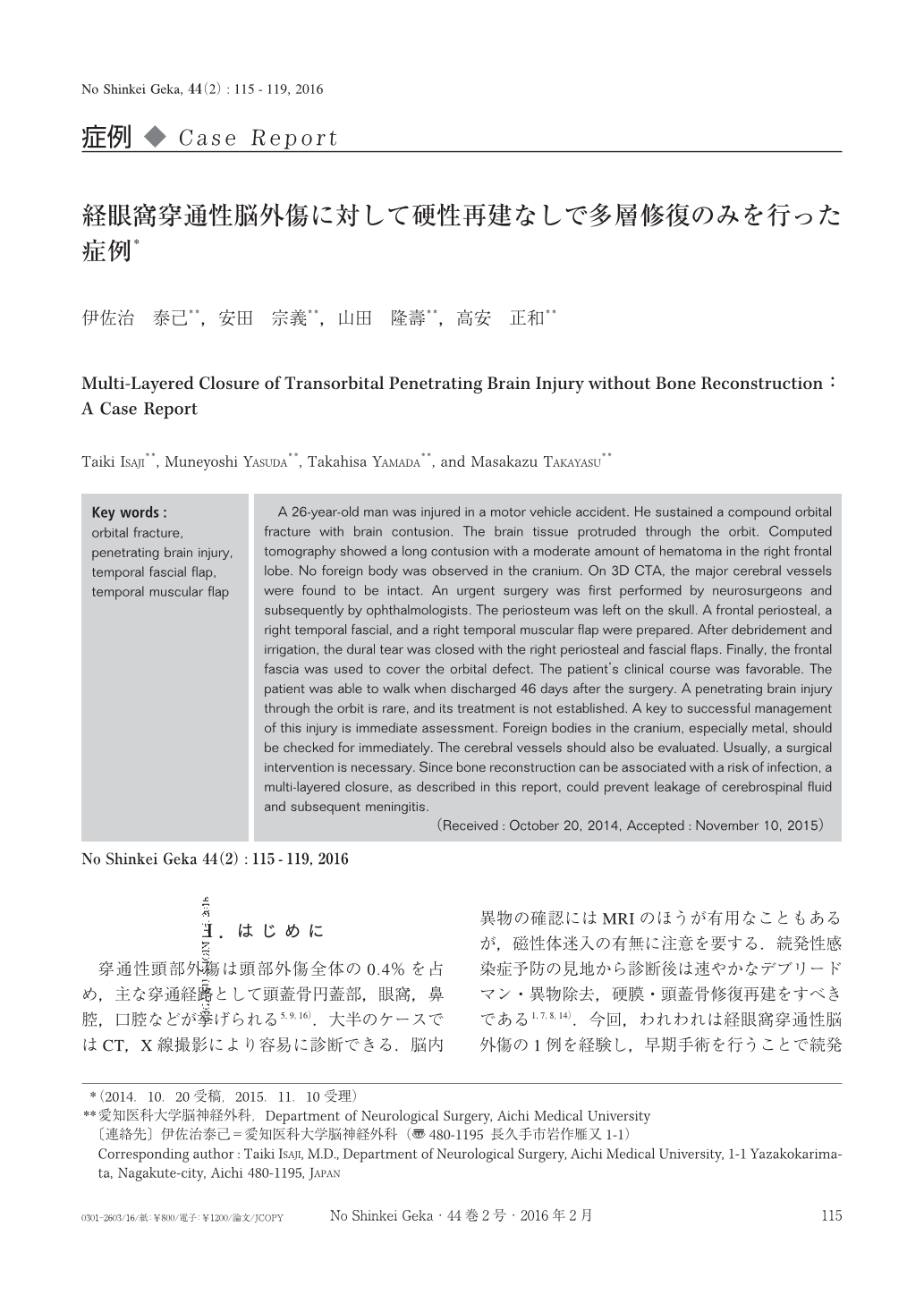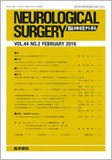Japanese
English
- 有料閲覧
- Abstract 文献概要
- 1ページ目 Look Inside
- 参考文献 Reference
Ⅰ.はじめに
穿通性頭部外傷は頭部外傷全体の0.4%を占め,主な穿通経路として頭蓋骨円蓋部,眼窩,鼻腔,口腔などが挙げられる5,9,16).大半のケースではCT,X線撮影により容易に診断できる.脳内異物の確認にはMRIのほうが有用なこともあるが,磁性体迷入の有無に注意を要する.続発性感染症予防の見地から診断後は速やかなデブリードマン・異物除去,硬膜・頭蓋骨修復再建をすべきである1,7,8,14).今回,われわれは経眼窩穿通性脳外傷の1例を経験し,早期手術を行うことで続発症なく良好な回復を得ることができたので報告する.
A 26-year-old man was injured in a motor vehicle accident. He sustained a compound orbital fracture with brain contusion. The brain tissue protruded through the orbit. Computed tomography showed a long contusion with a moderate amount of hematoma in the right frontal lobe. No foreign body was observed in the cranium. On 3D CTA, the major cerebral vessels were found to be intact. An urgent surgery was first performed by neurosurgeons and subsequently by ophthalmologists. The periosteum was left on the skull. A frontal periosteal, a right temporal fascial, and a right temporal muscular flap were prepared. After debridement and irrigation, the dural tear was closed with the right periosteal and fascial flaps. Finally, the frontal fascia was used to cover the orbital defect. The patient's clinical course was favorable. The patient was able to walk when discharged 46 days after the surgery. A penetrating brain injury through the orbit is rare, and its treatment is not established. A key to successful management of this injury is immediate assessment. Foreign bodies in the cranium, especially metal, should be checked for immediately. The cerebral vessels should also be evaluated. Usually, a surgical intervention is necessary. Since bone reconstruction can be associated with a risk of infection, a multi-layered closure, as described in this report, could prevent leakage of cerebrospinal fluid and subsequent meningitis.

Copyright © 2016, Igaku-Shoin Ltd. All rights reserved.


